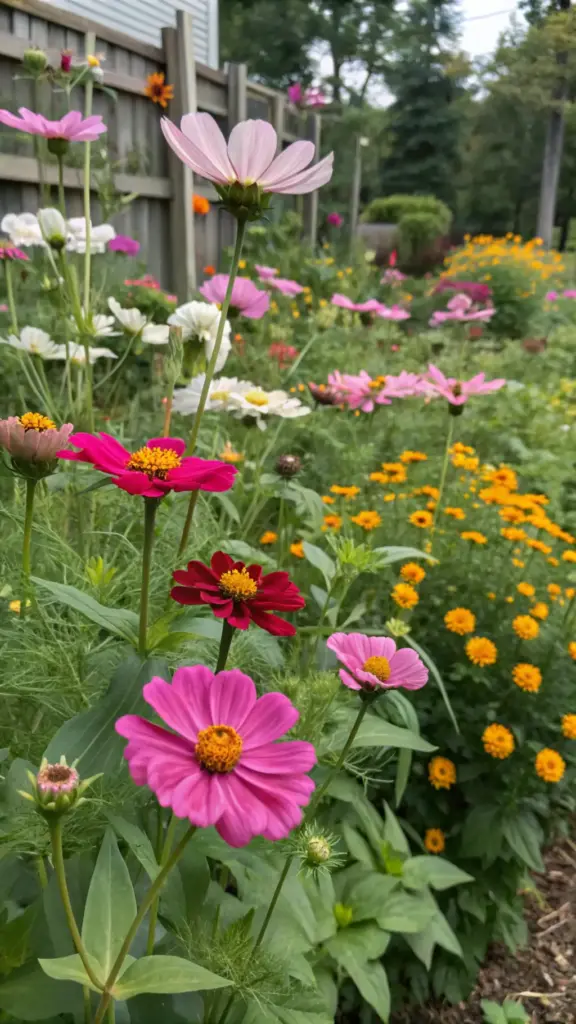5. The Pollinator Paradise

Let me tell you about my absolute favorite garden combination – I call it the Pollinator Paradise! After years of experimenting with different flower combinations, I’ve discovered that pairing single-flowered cosmos with ‘State Fair’ zinnias creates an absolute buzz of activity in the garden.
Why This Combination Works Magic
You know what’s fascinating? The varying heights and flower sizes of this duo create what I like to call nature’s landing strip for pollinators. The State Fair zinnias grow to about 4-5 feet tall, while the cosmos typically reach 3-4 feet. This height difference creates multiple feeding levels, which is exactly what our buzzing friends love!
I learned the hard way that cramming flowers too close together isn’t ideal. Now I space my plants about 12-15 inches apart, creating perfect landing zones for everything from tiny native bees to majestic monarchs. Trust me, watching a bumble bee navigate through these blooms is better than any nature documentary!
Maximizing Nectar Production
Here’s a pro tip I wish someone had told me years ago: To boost nectar production, you’ll want to:
- Water deeply but infrequently
- Add a layer of organic compost in spring
- Avoid high-nitrogen fertilizers
- Deadhead regularly to encourage continuous blooming
Creating the Perfect Habitat
The secret sauce to this combination is diversity. I’ve found that mixing in different flower shapes really ups the pollinator game. The single-flowered cosmos have this perfect landing-pad shape that bees absolutely adore, while the fuller State Fair zinnias provide those classic daisy-like blooms that butterflies can’t resist.
Remember when I said this was a paradise? Well, last summer I counted seven different species of butterflies in just one afternoon! The key is to plant in clusters of at least 3-5 plants of each variety. This creates those irresistible pollinator pit stops that keep the garden humming with life.
Maintenance Tips for Maximum Impact
One thing that really made a difference in my garden was learning to deadhead strategically. I leave about 20% of the spent blooms on the plants, especially toward the end of the season. Why? Because these will develop into seeds that help feed birds during fall migration. It’s like running a full-service restaurant for wildlife!
Ready to turn up the heat in your garden? Our next section covers the “Heat-Resistant Heroes” – a dynamic duo that laughs in the face of scorching summer days. Click next to discover how to keep your garden blooming even when the temperature soars with the incredible combination of ‘Xanthos’ cosmos and ‘Magellan’ zinnias!










GIPHY App Key not set. Please check settings